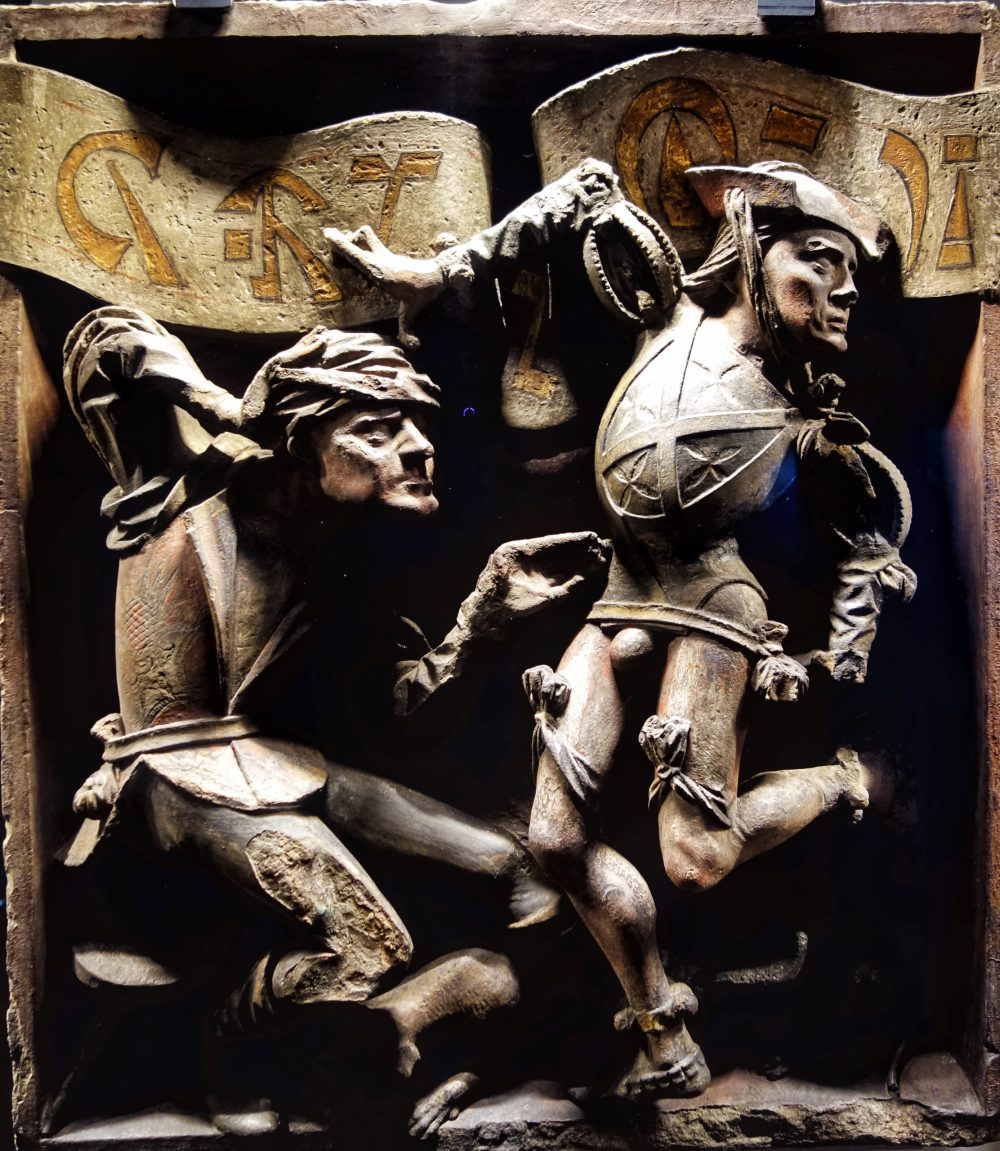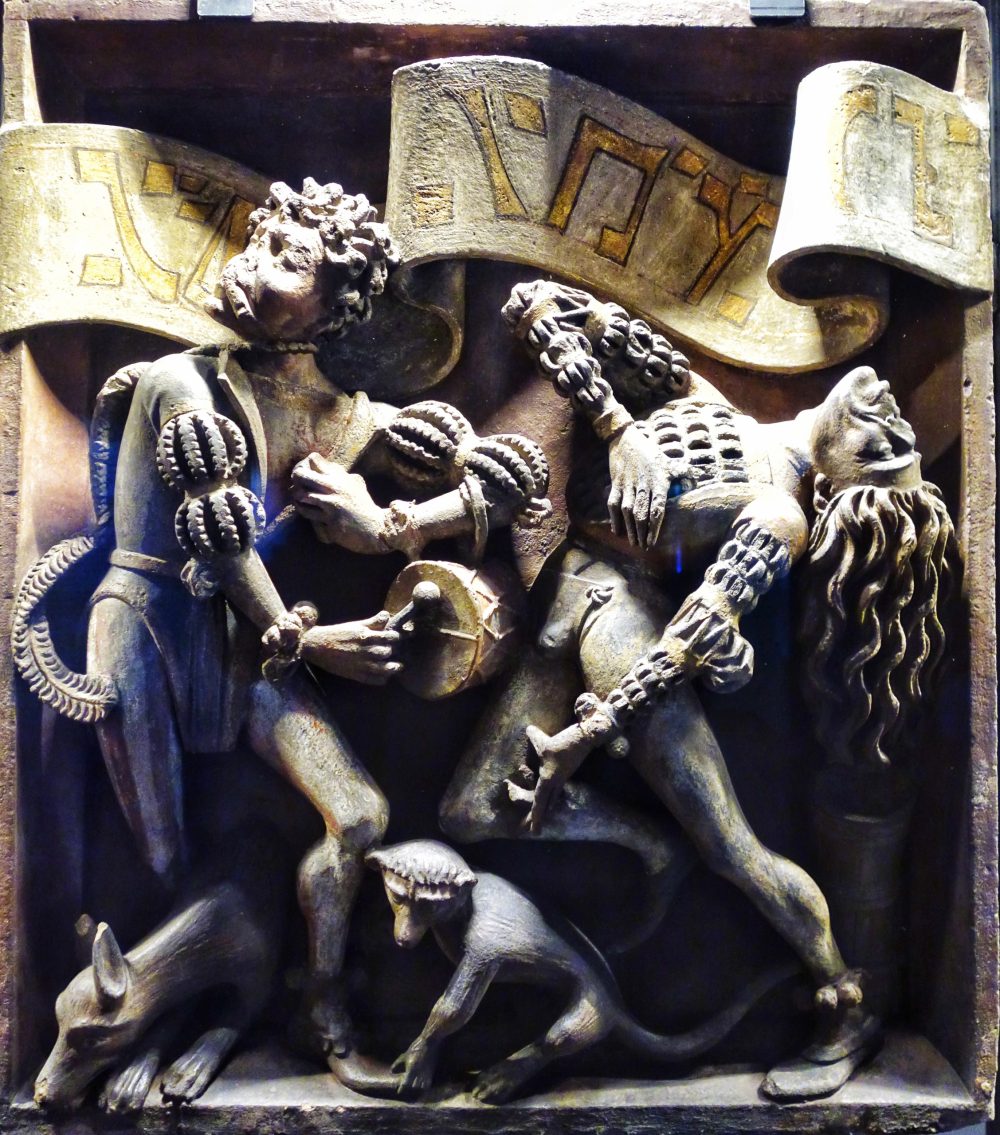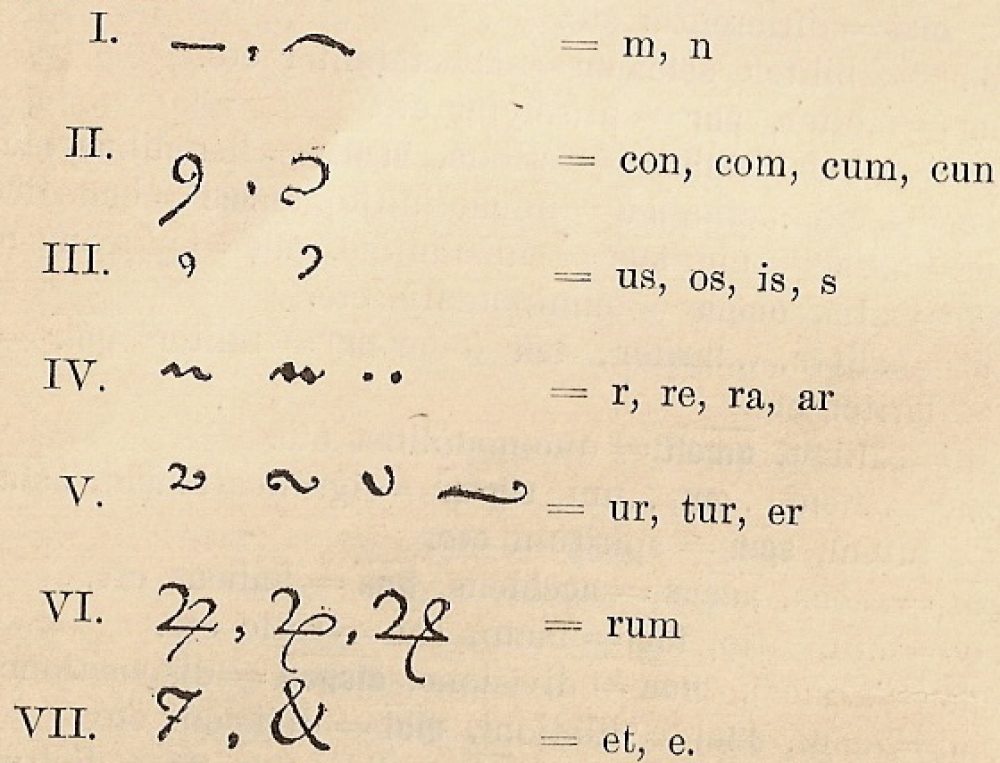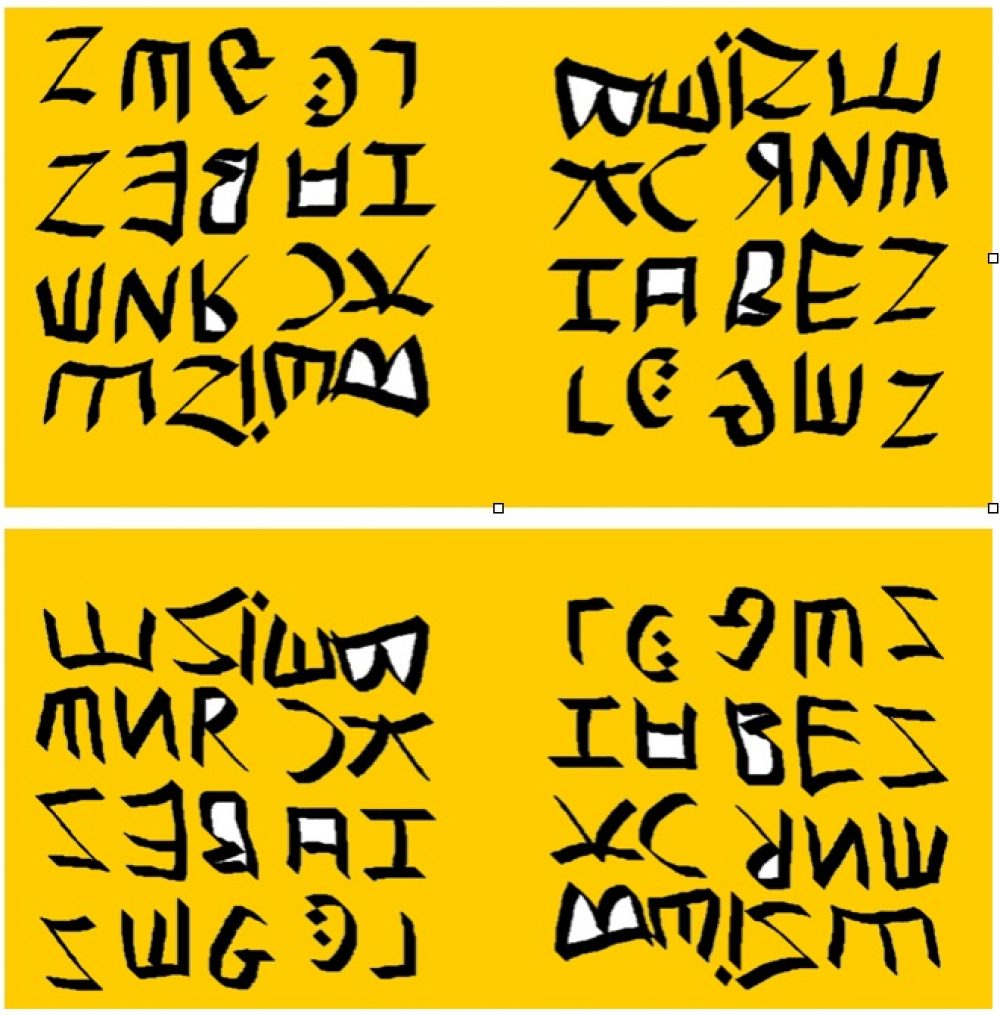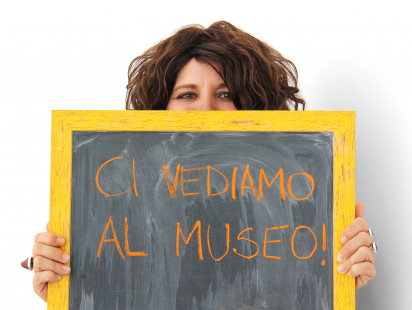
At last! Half a millennium after the construction of our world-famous landmark, the fog seems to be lifting over the last mysterious details of the Golden Roof. Just in time for the 500th anniversary of Maximilian’s death, the well-known Maximilian researcher Dr. Sabine Weiss solved the second last mystery last year: Who was the “donkey-eared jester” in one of the reliefs of the Golden Roof? It was Emperor Frederick III, whom his son Maximilian had depicted in a jester’s costume.
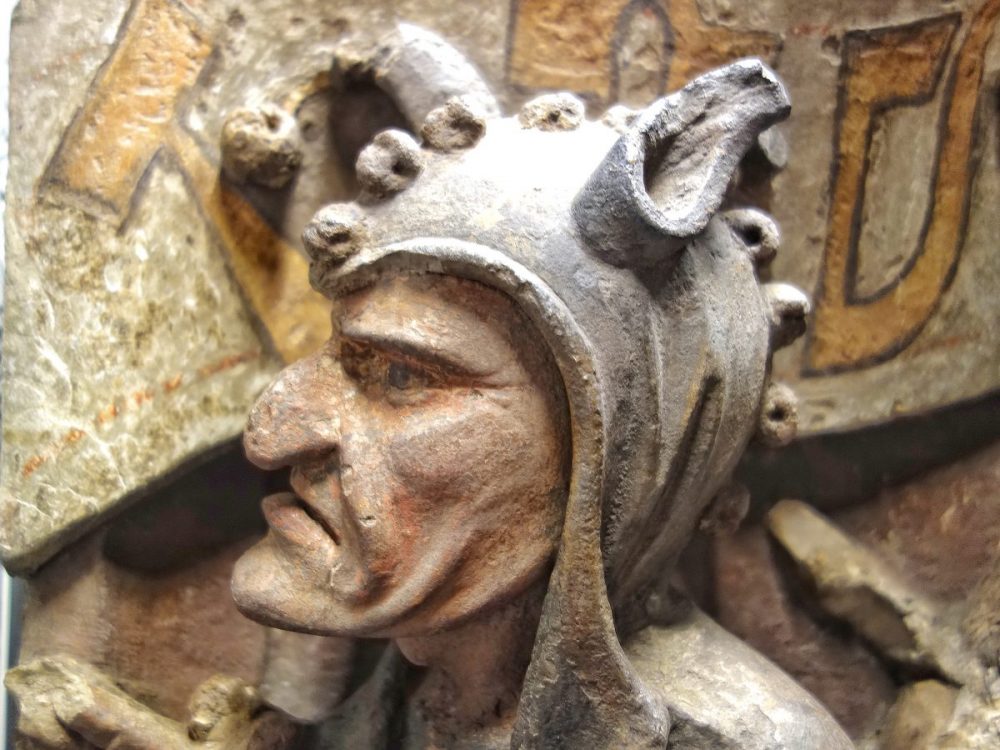
Maximilian had his father, Frederick III, Emperor of the Holy Roman Empire, depicted as a court jester with donkey ears and jester’s bells. This original relief panel was on display in the Goldenes Dachl Museum
Now comes the next, much more difficult prank: the unravelling of that band of writing, which consists of seemingly incoherent and above all mysterious characters. Only one thing was as clear as day: the idea must have come from His Majesty himself
HORDES OF SIGN AND WRITING SCHOLARS FAILED
The famous reliefs with the Moriscan dancers with their seemingly angular movements have so far been able to keep their secret. Whole crowds of scientists, antiquity researchers, writers and scribes tried to decode the writing band that virtually connects the reliefs. Even a large-scale campaign by our Tyrolean writer Felix Mitterer with the attempt of a ‘lyrical translation’ did not yield any tangible results. At first glance, the signs are supposedly of Hebrew origin. That they are by no means so was confirmed years ago by a study of the President of the Jewish Communities for Tyrol and Vorarlberg, Dr. Esther Fritsch.
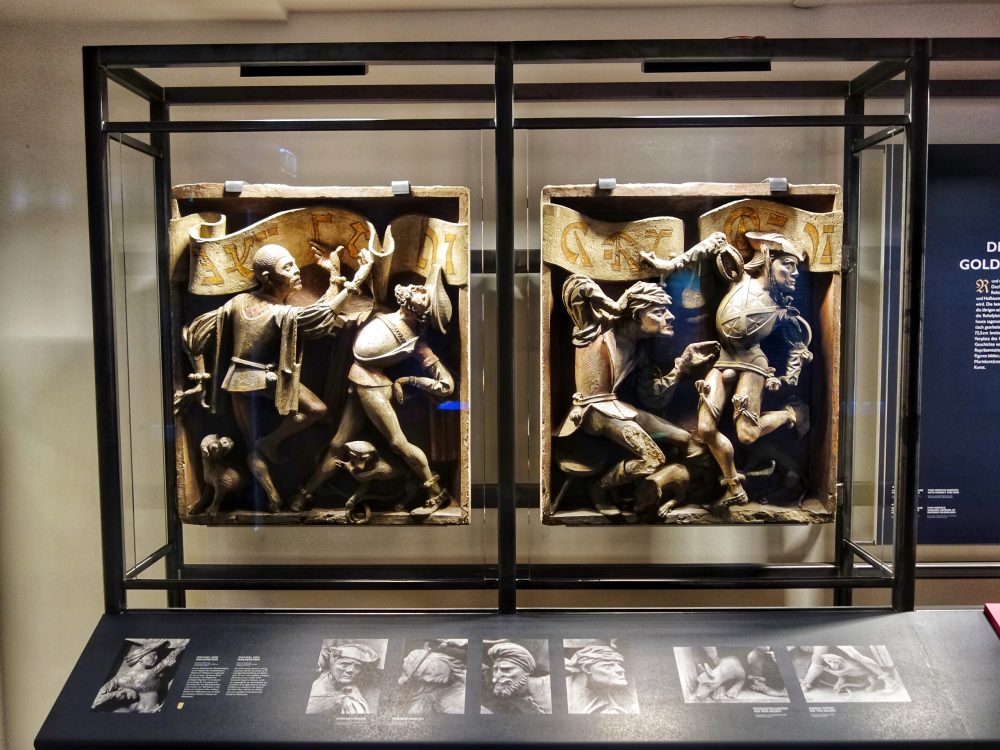
The original reliefs were presented at an exhibition in the Goldenes Dachl Museum. Clearly visible: the banner that connects all the reliefs. Replicas have been attached to the Goldenes Dachl since the 1950s.©Werner Kräutler
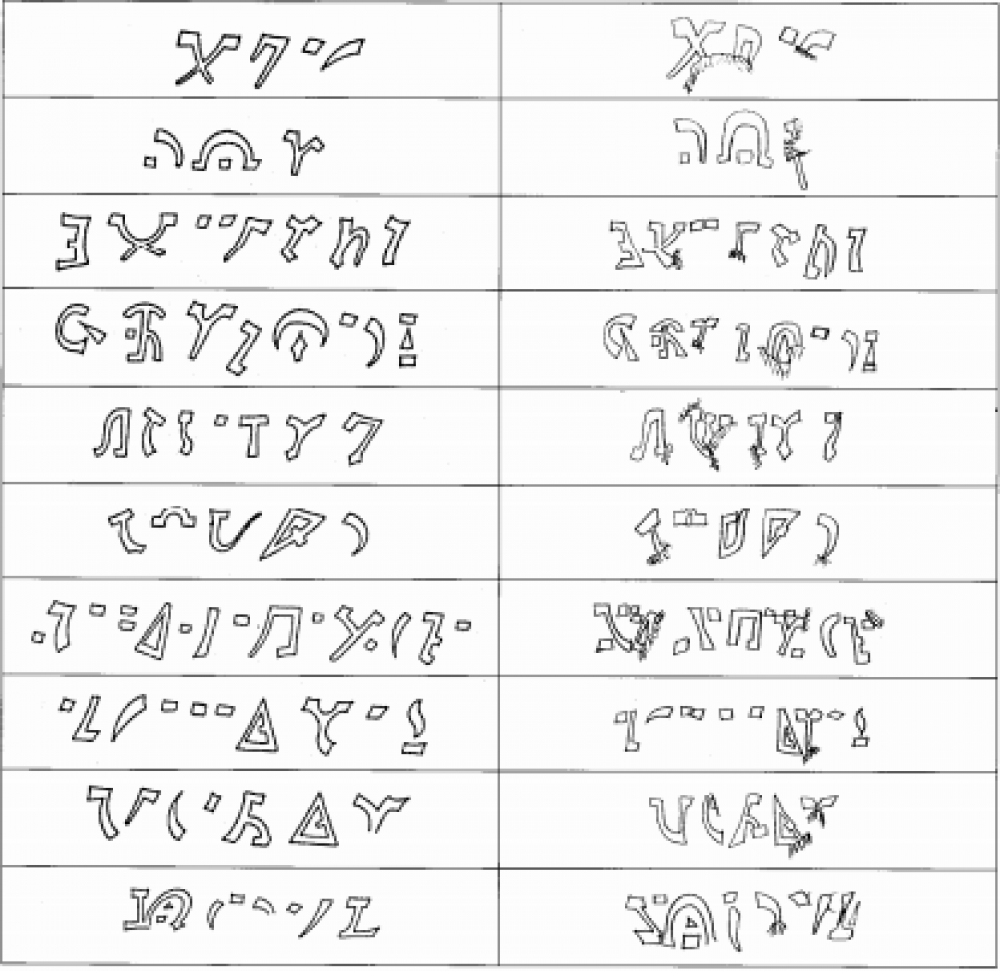
The first known drawing of the signs of the banner was made by Johann Wunibald Deiniger as early as 1899.
A historian from the Außerfern now presents the solution to the riddle. His name: Erhard Maroschek. Born in Styria, he is a trained historian and Germanist. For decades he has been living with his wife Waltraud in Lermoos at the foot of the majestic Zugspitze where he pursues his bread and butter job as accountant for the municipality of Lermoos. His hobby, however, is a very exclusive one: he is fascinated by old writings, enigmatic signs, secret symbols and cryptic bands such as the banner of the Golden Roof.
It seems as if he has now succeeded in doing what had been considered impossible for 520 years. For Maroschek has a solution to offer that is extremely coherent in the medieval context. And would also let the deeper meaning of the golden shingles shine in new splendor. As a complete layman in this field, I am left with only one option: to accept his resolution or not. In one sentence, I believe Maroschek has found the solution. Which fits perfectly into the world view of the then Emperor Maximilian as ‘builder’ of the Golden Roof.
20 YEARS OF PUZZLING: HOW IT ALL BEGAN
Maroschek’s interest in history had been aroused by professor Hermann Wiesflecker. He, in turn, was one of the absolute connoisseurs of Emperor Maximilian I. “But it was the artist and sculptor Josef Kieltrunk from Heiterwang who, long after my studies in the 90s, approached me about the banner on the Golden Roof”, Erhard Maroschek tells me. The artist was persistent, “for years” he says. When it became clear that the letters on the ribbon were not Hebrew characters, the font and character enthusiast decided to tackle the tricky task head-on. Now began a several years of puzzling, pondering and combining in the matter of the writing tape.
Magic signs, secret writing and text puzzles
He knew: The time around 1500 is characterized by the exploration of old scripts, the love of magic squares, secret scripts and riddles. In the midst of this mishmash, by the way Albrecht Dürer and Leonardo da Vinciwhich were all too often inclined towards cryptic signs and mysterious symbols. Moreover, printing had just been invented, which in turn had a great deal to do with writing and form. At that time, of all times, when Niclas Türing the Golden Roof had been erected around 1500, mystical-secret signs were celebrating their reign.
“Yet the banner has a long tradition as a decorative accessory” Maroschek explains to me. “Often people unfamiliar with reading were presented with their attributes, such as Peter with the key.” While the alphabets could easily read the inscriptions on ribbons. Stop exactly that at the Golden Roof not. And there was a reason for that.
Of ‘picking up’ the red thread
But how does one get a vague idea of what might be written on the Golden Roof? In other words: how does one find the red thread that leads to the goal, groping in the dark, as it were? Maroschek: “In epigraphy”. That is the science of exploring ancient inscriptions. There an old, extremely useful work turned out again and again as starting point of unravelings, he says: The “Lexicon Abbreviaturarum” by Adriano Capelli from 1928. Now he only had to ask himself the right questions
“The first important question is whether the text runs from left to right or vice versa”, the Tyrolean sign interpreter gives me a short lesson in unravelling. Then he had to clarify whether there were signs included that were used in connection with symbols from alchemy, astronomy or freemasonry. “Astronomical symbols also came into question,” he explains to me. For example, although one sign recalls the astronomical sign for Saturn, that was a sign often used in the Middle Ages for the H.
And then there’s the matter of abbreviations. A truly hard nut to crack. You see, in the Middle Ages, it was common and normal to use abbreviations. A small example: for the word “AND” the character “&” is still used today. Strictly speaking, it is a graphic abbreviation of the word “ET”. Maroschek was soon certain of one thing: abbreviations were completely ruled out for the Dachl banner.
From which position was the text to be read?
Then it is a matter of choosing the right position from which to read the banner. Would it be conceivable that the banner could only be read by those standing in the Goldenes Dachl box and looking down on the square? If so, the signs would not really have to be legible to viewers from below, since they would be upside down. And that is exactly the case with some of the words. But we’ll get to that later
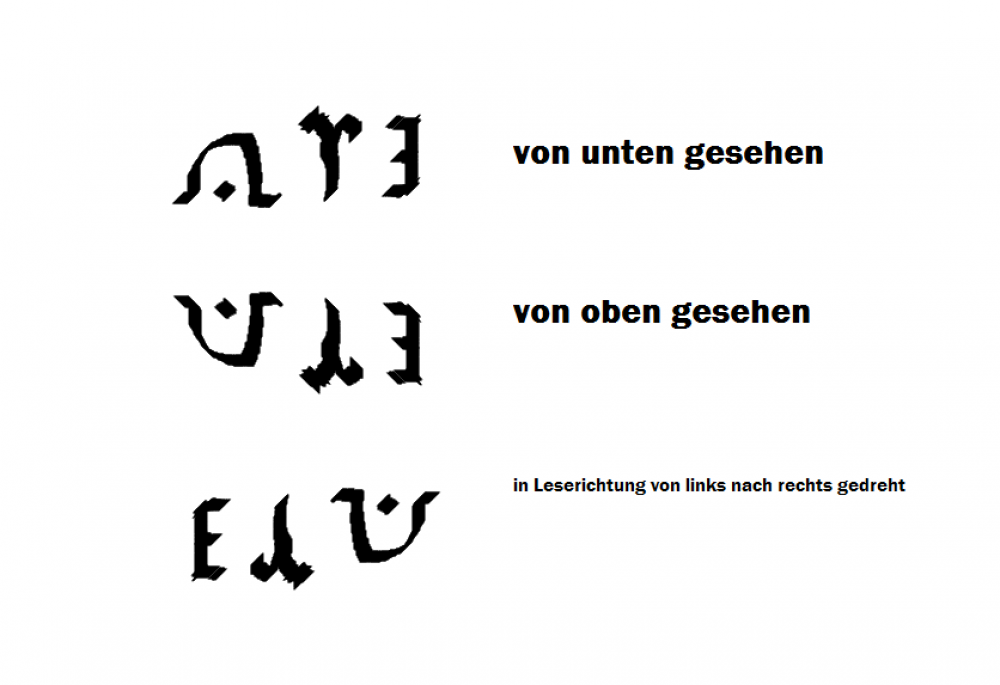
The breakthrough: the Latin word EGO (I). This can be seen and read again from below and above, from left and right.
Does a morris dancer give away the beginning of the text?
Then the question: is it a known language in which the tape is written? Maroschek was very quickly already sure that it must be a Latin text. Of course, he had a fair amount of experience and also a feeling for the fact that artificially divided letters were even at the head. The crucial point now was the beginning of the text, which had to be found
Then he noticed the figure of a morris dancer pointing directly at a letter with his outstretched forefinger. Was that the beginning of the text?
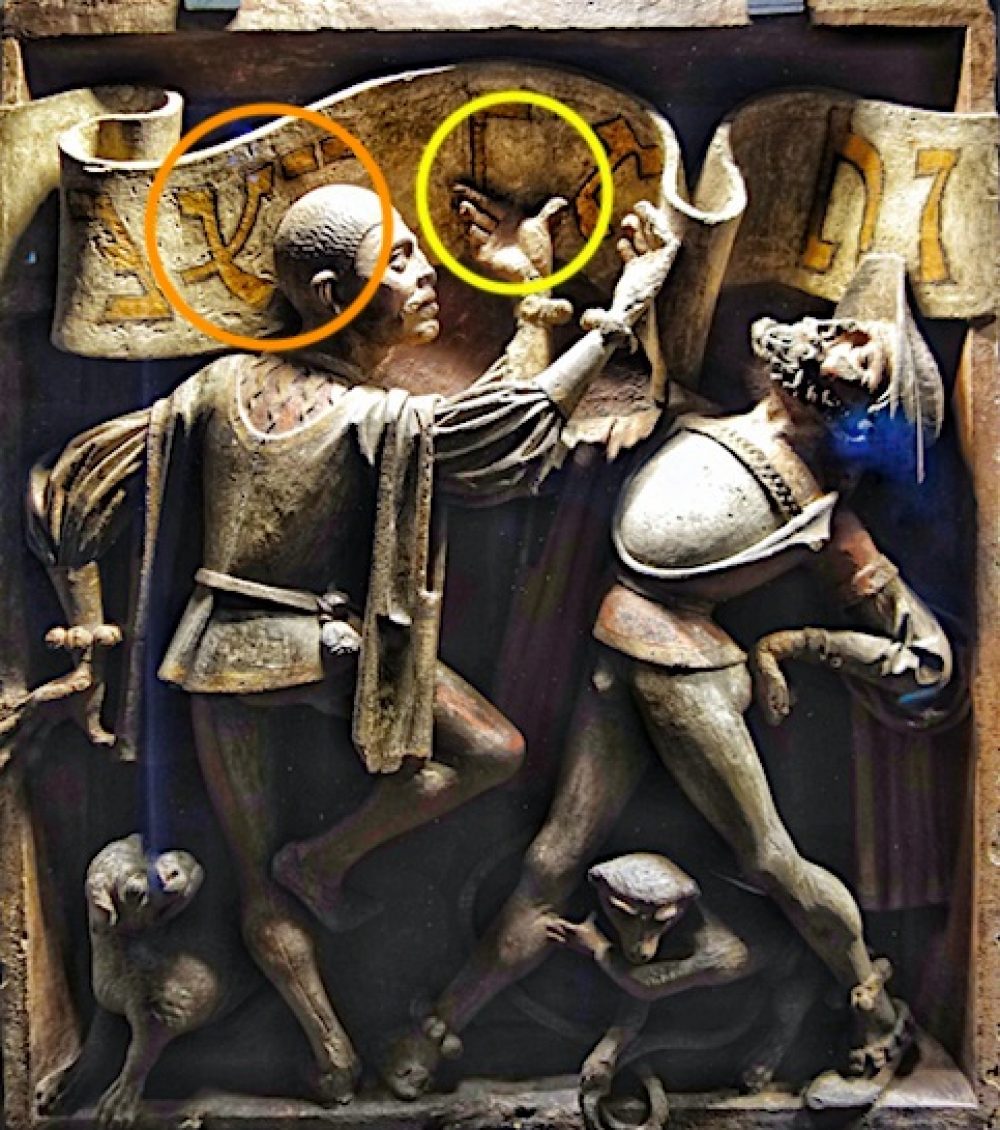
A moriscene dancer points to the beginning of the text (yellow circle). The ancient sign for Christ was X. (The Greek X is the first letter of the name ??????? (Christ) and also symbolizes the cross) Erhard Maroschek interprets it with a transverse colon as the beginning of the biblical quotation John 8, verse 12. The picture shows the original panel, which was presented last year in the Museum Goldenes Dachl. © Werner Kräutler
And indeed it was. The string looks like an omega, a gamma, and a slimmed down inverted E. So “OGE.”- “Well, I thought, OGE isn’t a vocabulary word that seems common, after all. It was easier because the researchers had thankfully excluded Hebrew,” Maroschek says with a laugh. But he was sure that he had found the beginning of the ‘red text thread’.
In addition, he found various signs that reminded him of an X. Now Maroschek was getting considerably closer to the point: in addition to the finger pointing to the combination OGE, LXU then followed. “Neither word is in the Latin dictionary,” he laughs. “But it could be EGO LUX”. That was half the battle and the breakthrough to decoding the text
If you now turn to Google and type in the two words “ego lux” you get the solution: a page pops up that reproduces the text of a Gregorian chant. It comes from the Gospel of John chapter 8 verse 12:
“EGO SUM LUX MUNDI QUI SEQUITUR ME NON AMBULABIT IN TENEBRIS SED HABEBIT LUCEM VITAE DICIT DOMINUS”
(I am the light of the world. He who follows me will not walk in darkness, but he will have the light of life, says the Lord.)
So it was the two little words EGO and LUX that proved to be the fitting key to opening this last secret compartment at the Golden Roof. “The text almost conjured itself afterwards” Maroschek tells us, beaming. “It only needed the SUM and a bit of MUNDI as well as some scraps to be sure. Even the HABEBIT defoliated before Maroschek’s inquiring eyes. This confirmed his initial hypothesis.
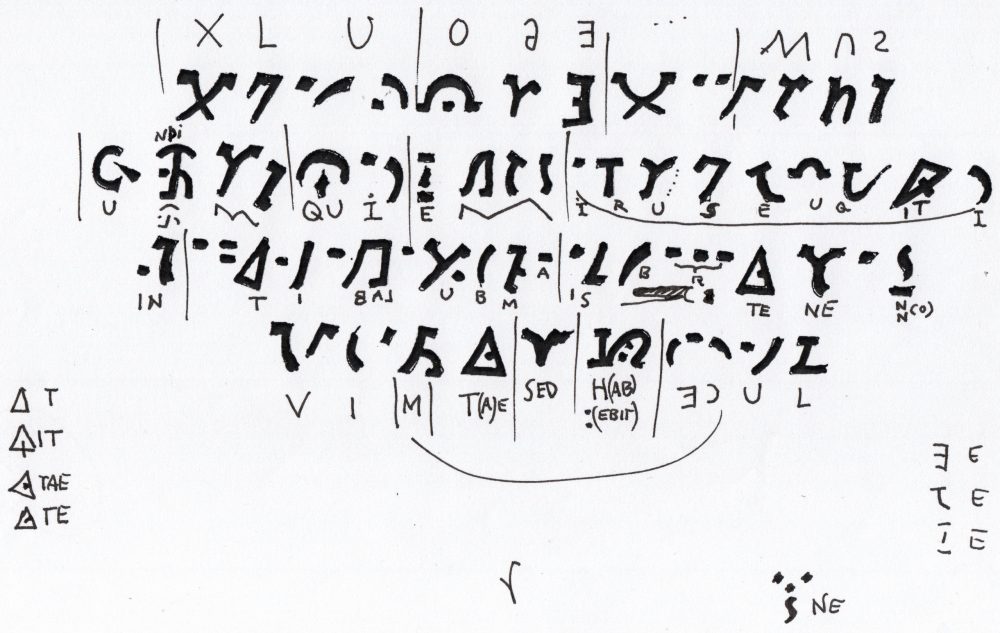
This is how Erhard Maroschek deciphered the text of the banner. Scribes and hobby researchers can download his presentation at the end of this text. In it he explains his interpretations and the procedure. ©Erhard Maroschek
The Morisco dancers seem to dance the text
It is also interesting to suggest that the text had somehow been adapted to the dancers (or the dancers to the text). Changing reading directions and frequent twisting of the letters harmonize quite well with the dancing accompanying figures. The question of how the text and figures are related would be another exceedingly exciting task for scholars and sculptors.
“The final question of whether it was a deliberate cipher actually goes nowhere,” says Maroschek. Because at the time of its creation, the very large part of the people was completely ignorant of reading and writing. A script would have been unreadable for the people in any case. With or without alienation
The Gold of the Dachl: A Symbol of the Divine
What I would like to add is that my now intensive study of Emperor Maximilian no longer leaves me in any doubt about Maroschek’s interpretation of the banner. For religion played a central role in the life of the ‘Last Knight’. He knew and was always aware that his life was in God’s hands. That is why he attended daily church services and had a priest say mass on a portable altar when he traveled. Anything other than a biblical quotation on the Golden Roof would certainly have been inappropriate for the emperor. Perhaps he wanted to avoid difficulties with the Church. For such painted quotations were normally only permitted in ecclesiastical buildings. And so even learned clerics couldn’t read it
What fascinates me: The golden bricks not only symbolized the divine to him… They also reflect that light in which he wanted and was allowed to bask as emperor.
For me, the deciphering of the banner on the Golden Roof is another important building block in the historical explanation of the thoughts and actions of Emperor Maximilian I. I have deep respect for the achievement of this work. I have deep respect for Erhard Maroschek’s achievement.
Here he describes in the download how he solved the riddle: The banner at the Goldenes Dachl
Erhard Maroschek has a task for all those who want to act as ‘decoders’: Which text is formulated here? Answers please under the comments.
More blogposts from me about Emperor Maximilian and the Golden Roof:
Gorge shitter discovered at the Goldenes Dachl
“I don’t want to be forgotten with the sound of the bell”
Emperor Maximilian, a medieval PR genius
The Martinswand, where Emperor Max stood on the edge of his grave
Rate this article
Show me the location on the map
A volunteer at the "Schule der Alm" alpine farming school, cultural pilgrim, Tyrol aficionado and Innsbruck fan.
Similar articles
Innsbruck is really good at beauty! But where a building site is currently disrupting the…
Innsbruck is a popular tourist destination. The big attraction remains the mountains, but the city has a…
Not just looking at art, but getting to know it better on a guided tour, talking about…
The 'Path of the Senses' from Rietz via Stams to Mötz-Locherboden is an exploration in the…


